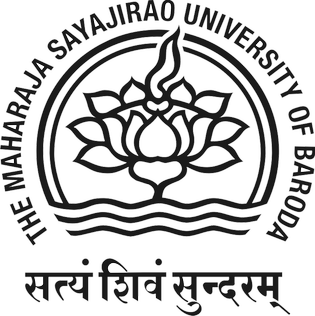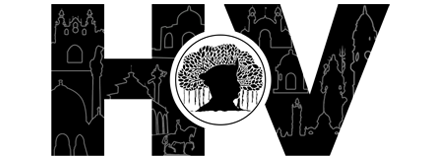Established as the Baroda College of Science, and currently known as the Maharaja Sayajirao University of Baroda (MSU), the college was opened in 1881. The foundation stone of the college was laid by visionary ruler Maharaja Sayajirao Gaekwad III on January 8, 1879. It became a university on 30th April 1949, after the independence of the country and was later renamed after its benefactor Maharaja Sayajirao Gaekwad III. It is the only university in Gujarat whose medium of instruction is English for all courses.
The University Dreams :
The idea of having a State university sprung up in the minds of Baroda State academicians long before the idea of regional universities came up in India. Dr. Jackson, the principal of the Baroda College during 1908, was the first person to come with an idea of having a full fledged science institute. This was the first step in the direction of the making of the university.
In those days the Baroda Government had a policy to subject it’s educational system to periodical enquiries, to search for possible interventions and additions to its educational systems. For this purpose, a committee of imminent academicians was established in 1909. The committee recommended to expand the activities of the Baroda College by establishing additional chairs in new branches of knowledge, which ultimately laid the foundation of today’s M.S. University which was finally established in April 1949.
The Funds :
On the Diamond Jubilee anniversary of his accession to the throne, Maharaja Sayajirao Gaekwad III allotted large funds for setting up a University in Baroda, out of his personal as well as the state funds.
This mammoth task was eventually concluded by his grandson Sir Pratapsinhrao Gaekwad, who settled the trust, as desired by his grandfather. This trust is known as the Sir Sayajirao Diamond Jubilee and Memorial Trust and exists even today. In the present day as well ,it caters to the educational and other needs of the people of the former state of Baroda.
The University :
The university is the most reputed and prominent of all the educational institutions in the country and has under it over 120 public schools and over 100 private schools. It attracts a wide variety of people from all over India as well as from abroad. Over the years, a blend of local, national and foreign students has lend the university a unique culture.
The M.S.University which started out as a state college, now has over 15 faculties and 17 residential hostels, with 4 of them for women. The university caters to over 100,000 students with courses ranging from Medicine to Commerce.
Some of the most renowned faculties of the University are:
The Faculty of Technology & Engineering “Kalabhavan”
The Faculty of Performing Arts – Has the honour of being the first college of Music & Performing arts in the country.
Faculty of Science
Maharaja Ranjitsinh Institute of Design “Gulab Baug”
Oriental Institute – houses the 8th century “Tamra-Patra” which has the first written record of Baroda as the “Vatapatraka” village with it’s boundaries.
The Logo :

The full-bloomed lotus growing out of the lake symbolizes the emergence of mind and its triumph over matter. The flame rising from the center of the lotus is the flame of human knowledge, spreading light and learning for the coming generations. The motto inscribed below the lotus defines the purpose and existence of life which is love of beauty, goodness and intellectual curiosity.
The Magnificence :
In the path of creating an educational institute to benefit the people of it’s state, the University has given birth to many grand buildings which have become the identity of the city along the years.
Covering a massive area of 275 acres, it houses 89 departments spread over 6 campuses and some of the most famous buildings of Baroda. Most of the old buildings of the university, built in close proximity of time, display same type of architectural language. Many of these buildings are built around courtyards, with exposed brick facades and other elements being highlighted in ivory or white.
Faculty of Arts : The building shows an amalgamation of different styles of architecture, with elements ranging from Buddhist chaityas, to that of Ottomman style. Built around two huge courtyards this “E” shaped building is most famous for it’s massive dome. The dome has an external diameter of about 70 feet, and is the second largest dome in Asia after the Gol Gumbaz of Bijapur. Apart from the main dome, the building also has 8 other big or small domes. All of which these domes are woven together in a single fabric with similar kind of embellishments, such as the rows of “star” shaped windows and finials.
The main dome is a double skinned structure standing on a series of squinches, which resemble lotus petals. While embellishments on the exterior of the dome has disappeared over time, the interior is still intact and is painted in red and yellow patterns. Further the dome is pierced with two rows of small windows, one of which are circular in shape while the other row also has circular windows but with a “star” shape inscribed in the circle.
The building boasts an imposing facade brought together by the elements of different styles of architecture. While the tall Islamic arches and domes lend the building its grandeur, other elements like the “ashoka” leaf motif, the Buddhist “kudu” arches inscribed with faces, the intricately carved brackets and the beautiful “jali” work, lend the building its elegance and grace. All this is further enhanced by painted motifs that define the arches and the bands of green ceramic tiles running across the facade. Apart from all this, it displays small “chattris” capping the tower-like elements emerging from the first floor.
Although largely intact, the domes of the structure have lost their embellishments, and have blackened over time.
Faculty of Science : Also built around a courtyard, this building also follows the same architectural language followed throughout the campus. With an almost linear facade, the double storeyed building has corridors with Islamic arches, running across its front facade. Apart from this it has a front porch protruding from it. This porch is topped with a white colored domed structure and small chattris on all four corners. The dome of this building is known for housing a 8 inch refractory telescope and observatory.
The building is sparsely decorated, and has elements like stone brackets lining the top of the porch supporting the a shallow “chajja”. Along with this, small lotus motifs flank the Islamic arches of the porch.
The Experimental School : Also an “E” shaped building, this double storeyed structure comes halfway between the Faculty of Arts and the Faculty of Science in terms of ornamentation. Earlier named as ‘Baroda High School’, the building has three domes, a large central one, and two small ones demarcating the corners of the structure. On the two wings forming the outer arms of letter “E”, the building displays neatly arranged rows of windows on both floors, and a string course with small brackets demarcating the roof slab (this string course runs across the length of the building). Just like it’s adjacent building, the longest wing of the building (which holds the three “arms” of letter “E” together) displays corridors with Islamic arches.
Unlike the other two arms of the building, the central arm of the building is elaborately decorated and has three storeys. The front facade of this wing has a porch on the ground floor, while the upper two storeys have windows embellished with stone lintel and small bracket like elements. The central window of the topmost storey shows a “kudu” style arch. Curiously enough, the side facades of this wing display tall buttress like elements topped with finials.
All of the above buildings display the grandeur and the identity of the University made for the great future of the people of the State by a visionary ruler.
While paving the way for the upliftment of the education system of the State, the University also paved the way for innovations in the fields building and construction. The University has become one of the most respected institutes of the country along the years, serving thousands of students and spreading the light of knowledge, turning the meaning of it’s logo into a reality.







No Comments